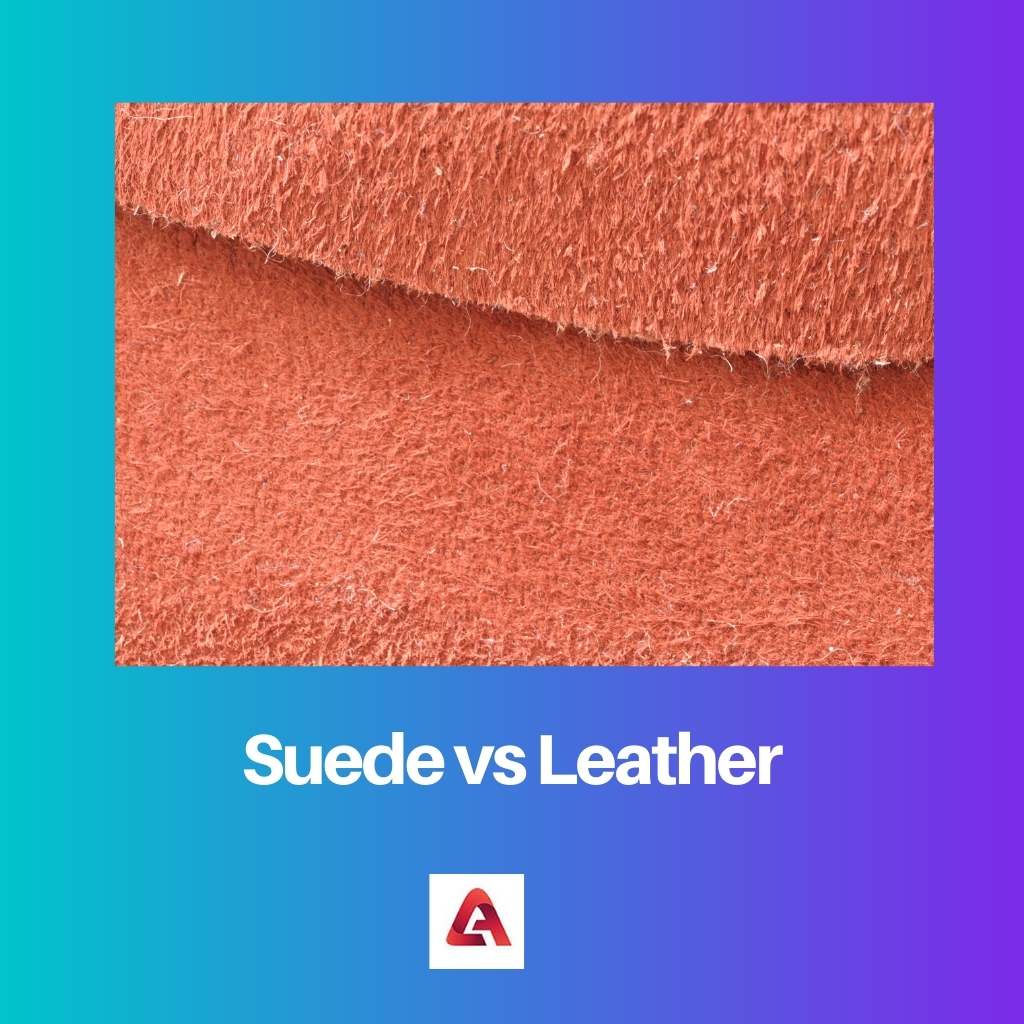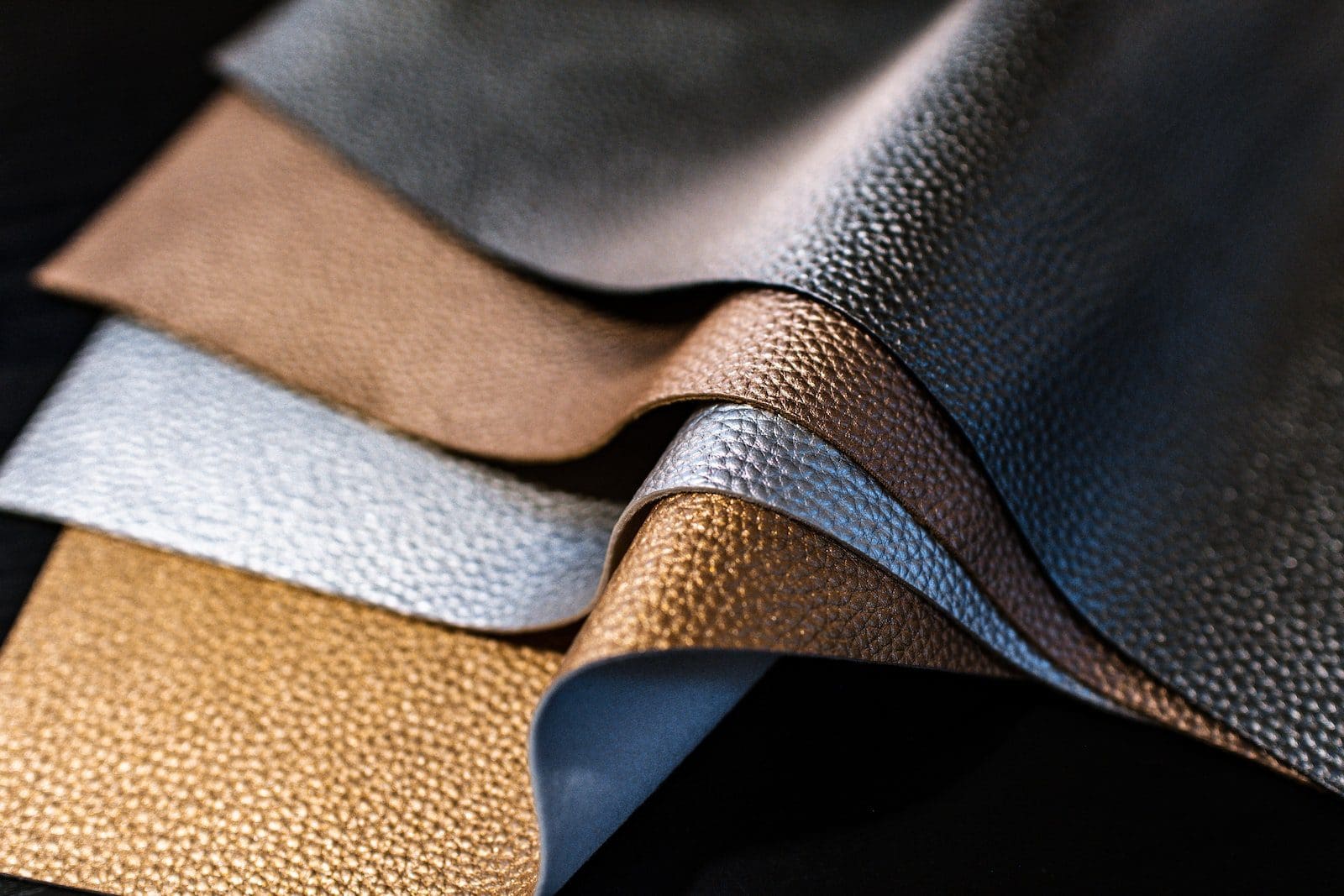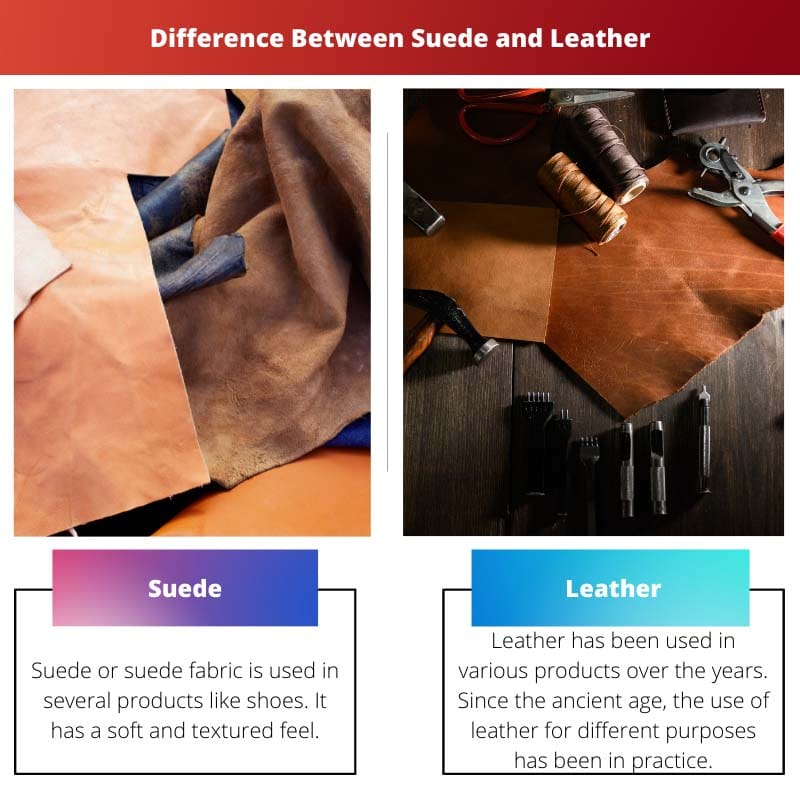It is not easy to spot the differences between suede and leather. A person who decides to buy a shoe will then face the options of suede and leather shoes.
Shoe experts can point out the differences between suede and leader within seconds, while the average person is confused if there are any differences.
Key Takeaways
- Suede originates from the underside of an animal’s skin, giving it a softer texture and more delicate appearance.
- Leather comes from the top layer of animal skin, offering greater durability and resistance to wear.
- Both materials require specific care and maintenance to preserve their quality and appearance.
Suede vs Leather
Leather is made by tanning animal hides with chemicals to preserve them and make them more durable. It is used to make jackets, shoes, belts, and handbags. Suede is a soft and fuzzy type of leather that is less durable than regular leather and requires more care and maintenance.

Suede or suede fabric is used in several products, like shoes. It has a soft and textured feel.
It is important to note that suede fabric is from the underside or flesh of the calfskin and other animals.
Suede does not include the tough layer and is less durable than leather.
Leather has been used in various products over the years. Since the ancient age, the use of leather for different purposes has been in practice.
It is taken from the animals’ outer skin layer, and the hair is removed by the process of tanning.
Leathers are dyed or coloured with different colours to make them more attractive.
Comparison Table
| Parameters of Comparison | Suede | Leather |
|---|---|---|
| Obtained from | Suede is obtained from an animal’s underside layer or the flesh side. | Leather is obtained from the outer or exterior skin layer of an animal. |
| Feel | The Suede is soft and textured. | Leather is smoother. |
| Fabric | The Suede has a matty fabric | Leather has a sheen fabric. |
| Flexibility | Suede is more flexible than leather. | Leather is less flexible than suede. |
| Durability | Suede is less durable than leather. | Leather is more durable than suede. |
What is Suede?
Suede is a type of fabric that is used in several products like shoes, etc. This type of fabric provides a soft and textured feel when touched.
The suede fabric is taken from a completely different part. Unlike leather, suede is obtained from the underside of the flesh side of the animal.
Since it is from the flesh side, it does not have a tough layer. Being obtained from the side with no tough layer makes the suede fabric less durable than leather.
The Suede is from the corium part of the animal’s skin. The suede is mainly obtained from animals like lamb, deer, goat, and calf.
It is positive to note that Suede is a lot softer with a matty and napped finish. This advantage of suede makes it useful in the process of making shoes, bags, gloves, and other items.
As it misses the natural protective layer of the animal skin, suede is susceptible to dirt and liquid stains.
So, high maintenance is required for products made out of suede. It is also much easier to clean and wipe off the dirt from the suede products. The open pores of the suede allow it to be easily cleaned.

What is Leather?
Leather is a fabric that has been used in various products over the years. Since the ancient age, the use of leather to create products has been in practice.
It is a versatile material that can be used to create anything. The archaeological excavations have found several leather items around the world.
The significant advantage of leather over suede is its durability. The durability of the leather is much emphasized. The hide is obtained from the skin of the animals like cows, pigs, sheep, and others.
Leather is obtained from the grain or outer sides of the animal’s skin.
This outer side of the animal’s skin is a naturally protective layer where the fur grows and protects the skin from damaging environmental conditions.
The leather, processed from the grain side, has exceptional strength, durability, and toughness.
The leather can be a bit patterned, and this is due to the scars from the animal’s skin.
While leather might not be as aesthetically appealing as suede, a lot of people prefer leather for its amazing durability qualities.
As a tough product, leather is also resistant to water and can be cleaned when made dirty.

Main Differences Between Suede and Leather
- Suede is obtained from the animal’s inner side, the flesh side. Leather is obtained from the animal’s outer side, the grain side.
- Suede from the flesh side makes it less sturdy due to the absence of a protective tough layer. Leather from the animal’s grain side makes it much tougher due to the natural protective layer of the animal’s outer skin.
- Suede is more flexible than leather. The leather is less flexible than suede.
- The feel of the suede is soft and textured. The feel of the leather is smooth.
- The fabric of the suede is matty and napped. The fabric of the leather is a sheen fabric.


This is an important topic to discuss as people don’t understand the differences between suede and leather, and this article does a good job of addressing that.
I appreciate the detailed comparison between suede and leather. It’s always helpful to have a clear understanding of the differences between these materials.
This article provides a detailed look at suede and leather, outlining their features and differences in a very informative way.
I completely agree, this article is very thorough and informative.
The article does a fantastic job of breaking down the key differences between suede and leather in a straightforward and easy-to-understand manner.
While the content is commendable, I find the tone to be overly formal and could be improved with a more conversational style.
The leather vs. suede debate is a classic one, and this article does an excellent job of breaking down the differences between the two.
The article provides a comprehensive comparison between suede and leather, outlining their various characteristics and applications.
The article does a good job of highlighting the key differences between suede and leather, making it easier for readers to make informed decisions about their purchases.